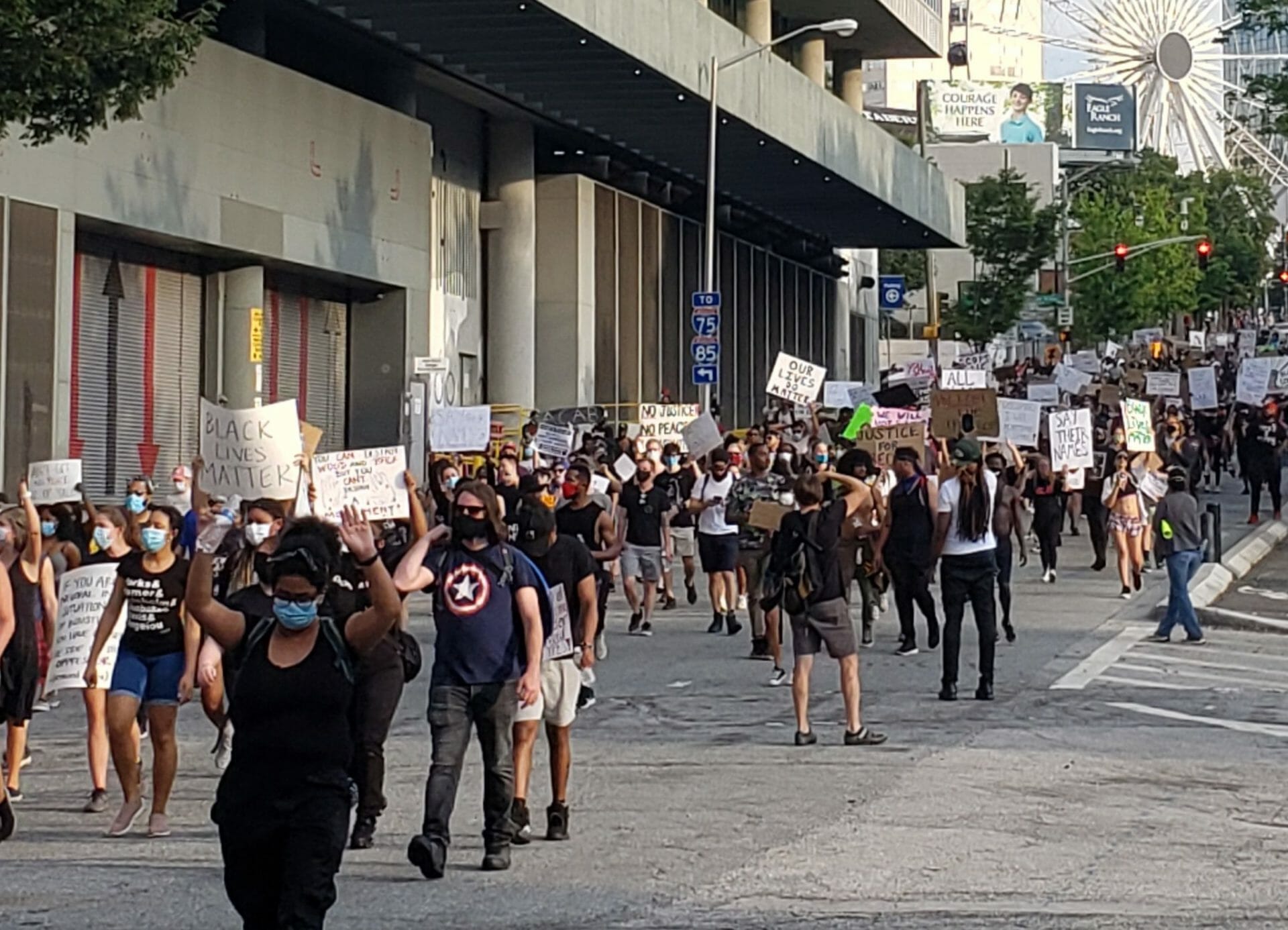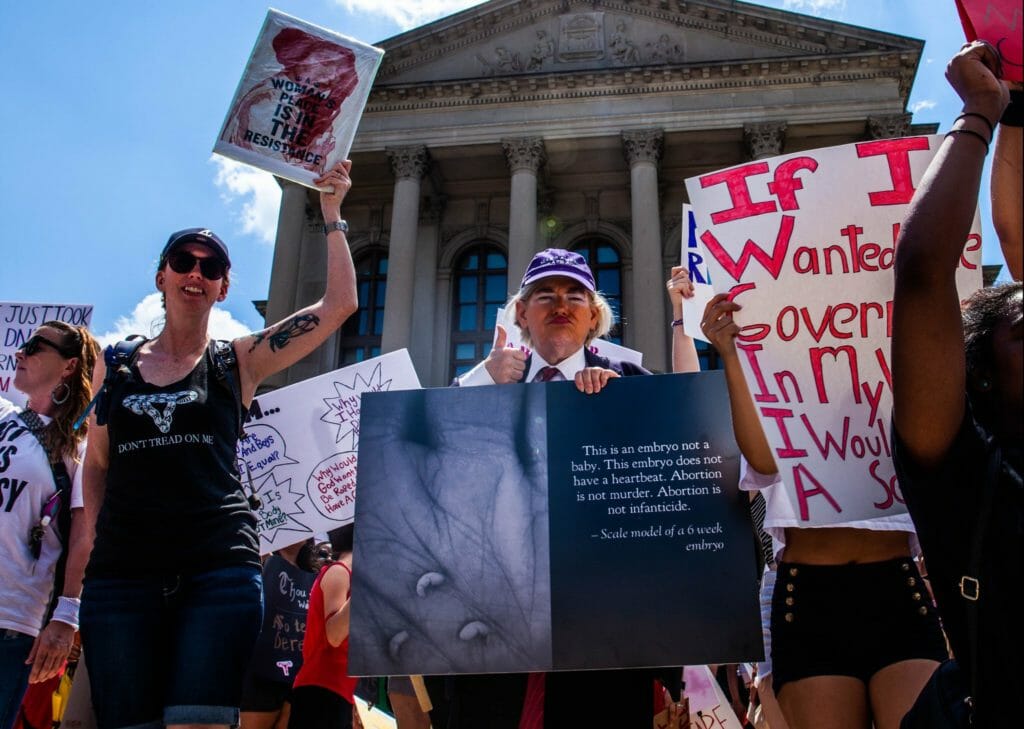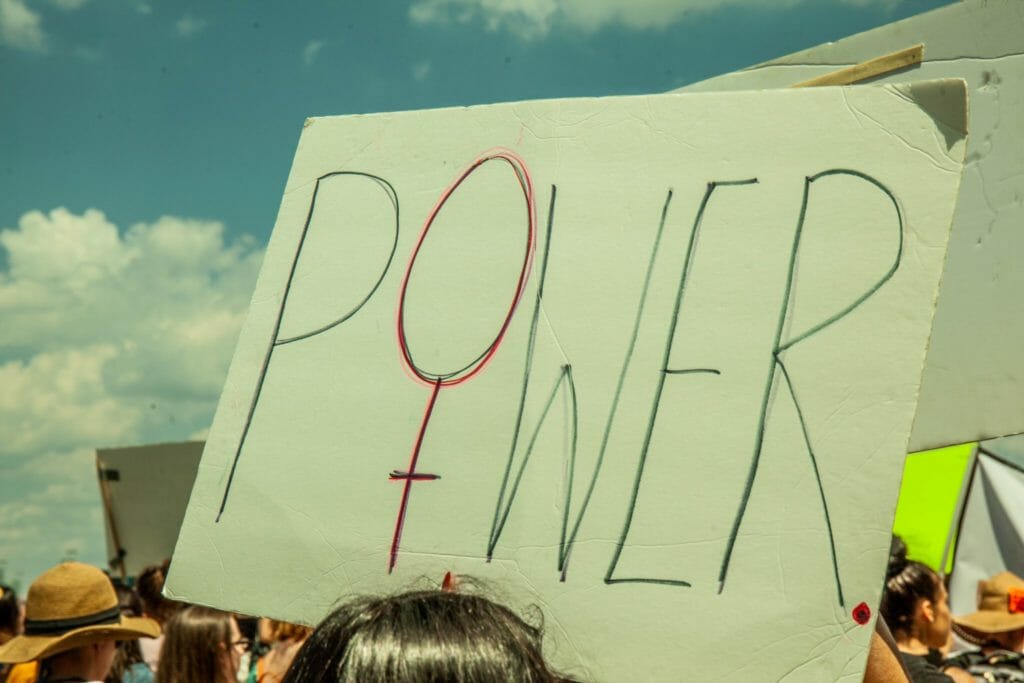ATLANTA — On May 29, 2020, as Atlanta Police Department cars burned, lights flickered in the shattered storefront of the College Football Hall of Fame, and fires raged in at least two Targets, Killer Mike took the mic at Mayor Keisha Lance Bottoms’ emergency press conference to ask Atlanta a question: “After you burn down your own home, what do you have left but char and ash?” While Killer Mike’s plea was made in good faith, politicians and pundits from across the political spectrum took his sentiment further, weaponizing property damage as evidence that protesters had traded a disciplined message of justice for wanton destruction. Not long after, on Sat., June 13, a Wendy’s in Southeast Atlanta burned following the APD killing of 27-year-old unarmed Rayshard Brooks. The sight of the fast food restaurant burning monopolized local and national news reels, becoming the primary focus of conversation surrounding the demonstrations.
Yet, somehow, among the pearl-clutching and hand-wringing, few bothered to question the assertion that private property was synonymous with community, or that breaking into a Foot Locker or burning down a Wendy’s was equivalent to destroying one’s own home. In just a quick glance to the history of race and class politics in Atlanta, we are sure to uncover a legacy of exclusion created by a system of urban power that has historically blocked the most marginalized — which, in Atlanta, almost always means poor Black communities — from having any meaningful input into the physical character of their own neighborhoods.
Instead of browbeating protestors about the horrors of property damage, we should look at that smoldering Wendy’s as an expression of democracy in its purest form, a powerful and necessary assertion of their Right to the City, an ideological concept that originated in the late 1960s and has since been reclaimed by urban social movements throughout history. While a Right to the City seems vague and idealistic on the surface, in practice it refers to a decades-long struggle for a specific set of demands: reject the commodification of communities, fight the dominance of capitalism in every sphere of urban life, and actualize the right of radical self-determination for historically excluded communities.
Civil rights are inextricable from Atlanta’s DNA, but their implementation has often been entrusted to city officials, business leaders, celebrities, and nonprofits. This model has time and time again failed all but the most powerful Atlantans. It’s time that we advocate for our Right to the City, for specific policies and programs that challenge Atlanta’s racist and classist power structures and offer tangible ways for disenfranchised communities, especially poor and BIPOC communities, to take control of their destinies.
The origins of a Right to the City as a distinct concept date back to 1968, when French Marxist sociologist Henri Lefebvre published his book, Le droite à la ville (which translates to “Right to the City”). Though Lefebvre started as a rural sociologist, his focus shifted to cities as he viewed them as new frontiers for capitalist exploitation, and, conversely, for spaces to create alternatives beyond capitalism. Under industrial capitalism, Lefebvre believed that property rights had become hegemonic systems that controlled, commodified, and segregated cities. Just as Marx theorized the process by which capital alienates workers from the products of their own labor and means of production, Lefebvre believed that property rights alienate people from the urban space they inhabit.
Lefebvre posited two strategies to break the dominance of property rights and reclaim the Right to the City: appropriation and participation. Appropriation is simply the right of urban space to those who inhabit it, not those who own it. Instead of treating urban space as a tool for the accumulation of capital, the Right to the City demands that this space is used for the needs of its inhabitants, for its social value. In Atlanta, where community assets from parks to permeable pavement to DIY music and art venues have been exploited for their potential to raise property values, it’s easy to see the urgency to decommodify our city.
Participation, for Lefebvre and countless other urban scholars and community activists, is a necessary and deeply flawed process. Urban democracy, like democracy all over the United States, is often impoverished and tokenistic. Lefebvre called specifically for radical participation; not the kind that, as he said, “allows those in power to obtain, at a small price, the acquiescence of concerned citizens. After a show trial more or less devoid of information and social activity, citizens sink back into their tranquil passivity …”
While Lefebvre remained vague about what these new participatory processes might look like, he was adamant that it was necessary for people to struggle collectively, manifest solidarity across social movements, and manage their own space, eventually making the role of city planners and other city officials redundant. This way, participation becomes the means of appropriation and the wedge for marginalized communities to fracture unjust power dynamics and realize their Right to the City.
All of this makes for compelling theory, but how can appropriation and participation actually happen? In the decades since Le droite à la ville, the Right to the City became a rallying cry around the world. As it percolated into liberal discourse, the radical framework for urban anti-capitalist struggle quickly became another slogan for politicians and nonprofits. International organizations such as UN-Habitat define the Right to the City as the right to “spatially just resource distribution, political agency, and social, economic and cultural diversity.”
Yet these rights, which when adopted by cities are often not legally binding, typically fail to challenge (or even mention) capitalism, the economic system that manufactures and feeds off the inequities they’re trying to address. These frameworks also position the adoption of a Right to the City into legal codes as the end goal. While important, legal protections and rights are easily corrupted and minimized. The U.S. itself is a testament to the failure of law to reverse the enduring inequalities (state-sanctioned violence, to be more exact) wrought upon communities based on class, race, gender, sexuality, physical ability, citizenship, et al.
Rather than relying on legal codes to enforce the Right to the City, a strategy exemplified by Brazil’s City Statute that continues to face criticism for its failure to protect poor neighborhoods, cities should devolve power to marginalized communities through the transfer of political and socioeconomic resources. A Right to the City means a right to organize, which can’t be realized without addressing the material conditions that atomize, segregate, and disempower communities.
Here are five tangible, actionable ways we can fight for our Right to the City of Atlanta. While the action items in this outline are not comprehensive and perhaps not as radical as Lefebvre would have liked, they can create the social structures necessary to put power in the hands of those who have been denied it for too long.
1. Establish Community Land Trusts
For decades, Community Land Trusts (CLT) have been a favorite of affordable housing advocates, community organizers, and sometimes even the planning and investments arms of cities themselves. CLTs allow communities to acquire and collectively manage land, thus decommodifying it and keeping it off the table for developers. Typically, a CLT starts when a nonprofit, community-based organization acquires and maintains ownership of land. Instead of the typical home purchase, homeowners enter into a long-term, renewable lease (up to 99 years) with the CLT. Upon selling, homeowners only receive a part of their increased property values, and the remaining portion is funneled back into the CLT.
By separating the ownership of property from land, a CLT is able to keep housing affordable, and allow residents to collectively organize and manage the land for a variety of purposes. In 1969, collective farm and civil rights pioneer Robert Swann, along with other civil rights leaders, founded the first CLT on a 5,000-acre farm outside of Albany, Ga. Known as New Communities, it was founded as a safe haven for Black farmers to escape discrimination and violence, become economically self-sufficient, and share agricultural techniques. While New Communities still exists as a nonprofit, the farm was lost in 1985 when emergency loans for a severe drought were distributed only to white farmers.
While anti-racism, community empowerment, and collective management were central tenets of New Communities, many contemporary land trusts have been criticized for narrowly focusing on CLTs as a vehicle for affordable home ownership. The severity of Atlanta’s ongoing housing crisis, addressed through piecemeal fixes such as Low-Income Housing Tax Credit-funded mixed-use developments and inclusionary zoning, should not be minimized; and affordable housing is certainly one of the primary benefits that CLTs offer, particularly to gentrifying neighborhoods.
But its full and radical potential has yet to be realized. CLTs are flexible, and many CLTs in cities across the country have used their residents’ equity to fund urban agriculture, community spaces, solar power, and playgrounds. Through processes of collective management and organizing, social ties once severed by the alienation of urban capitalism can be restored as communities democratically govern themselves, instead of entrusting their futures wholly to the revolving door of city officials. Innovative funding models need to be developed to avoid relying on federal grants to cover costs, and it is vital that CLT residents comprise the majority of the board that oversees its own operations. If done carefully and collectively, a CLT is a powerful tool in the fight for the Right to the City.
2. Adopt Participatory Budgeting
Participatory budgeting (PB), like CLTs, is another tool for democratic decision-making and resource allocation. Further, PB has a decades-long history and evidence from thousands of examples from which Atlanta activists can take note. The first PB project started in Porto Alegre, Brazil, in 1989, as an initiative of the Brazilian Workers’ Party to extend radical democracy beyond electoral victories. While PB has numerous iterations, its general framework allows communities to have power over the allocation of municipal budgets.
First, community members deliberate and develop proposals for budget spending. They then vote on which proposals best meet their needs, and finally the government allocates funding to implement the community’s winning proposals. Though the idea is simple enough, its outcomes have been transformative. In Porto Alegre, studies linked PB to substantial improvements in infrastructure such as water and sewerage, increased health and education budgets, greater citizen participation, and even lower child mortality.
Since 1989, over 7,000 cities have adopted PB measures to secure funding for various projects, such as community gardens, housing co-operatives, and bike lanes to improve transportation from low-income communities to jobs and schools. The City of Atlanta recently announced the winners of its own PB project launched by Councilmember Amir Faorkhi, which included improvements like pedestrian-only streets, better handicap access, and widening sidewalks.
Yet PB alone does not reach the Right to the City criteria of appropriation and participation. PB projects can easily and often be concentrated in wealthy communities. If community outreach isn’t done carefully, then the same historically excluded communities will continue to be shut out of the process as wealthier and more well-connected residents take over the process. For PB to be a truly radical process in Atlanta, it would need to be concentrated in the Black neighborhoods that still endure persecution and exclusion from the city — whether through police brutality, gentrification, or crumbling infrastructure.
Rather than being guided by city planners, the community members would guide each step in the process, from design through implementation, ensuring that space once used for capital accumulation is turned into a public resource. If anyone with power in Atlanta’s government is serious about defunding the police (they’re not), then reallocating funds from the ballooning APD budget to PB projects would be a decent start. Perhaps most importantly, PB creates solidarity while giving communities the opportunity to collectively organize for themselves, against the elite. Any participatory tool that strives to manifest real power must not be an end in itself, but a platform for sustained emancipatory struggle.
3. Overhaul the Neighborhood Planning Unit System
In 1973, Maynard Jackson was voted into office as Atlanta’s first Black mayor, thanks in large part to careful alliances he formed with Black neighborhoods. Mayor Jackson leveraged this unprecedented upswell of Black political power to pioneer the creation of Neighborhood Planning Units (NPUs). This decentralized system of neighborhood governance was intended to provide Black communities with a greater degree of autonomy and power over a range of land use decisions, such as alcohol permits, festivals, and zoning decisions. The City of Atlanta was split into 25 NPUs, each given the freedom to determine its own by-laws and internal governance structures. In theory, NPUs offer neighborhoods a great degree of political power as the Mayor, City Council, and other city officials have to consider the votes cast by NPU members.
Today, the NPU system still largely exists in the same form, but it’s been heavily criticized for straying far from its original intent of political enfranchisement for Black communities. For one, the flexibility of NPU governance structures means that some are far more hierarchical and exclusive, choosing to be governed by boards. The City of Atlanta sees an NPU vote as a proxy for the wishes of that neighborhood; however, NPU attendees often vote after absorbing complex information for the first time, with little context. Seeing a yay or nay vote on a zoning issue does not provide any information as to how well NPU attendees were educated on the issue they actually voted on.
While developers are supposed to present their projects to NPUs, sometimes NPUs learn about projects that are finished without any input from them at all. In 2015, a resident of NPU-L, which represents Vine City and English Avenue, reported that she “found out about Wal-Mart coming to our community. Not because it came to NPU-L, not because I voted on it, but because it was coming … And the really painful thing about it is that when Wal-Mart finally did send its people down, they acted like we should be thankful … you\’re a food desert, be happy. Even though the City often votes with NPUs, they are not required to by law.
Perhaps the most glaring shortcoming of NPUs is the fact that they don’t address the root cause of political disenfranchisement. People who work multiple jobs without access to reliable transportation and in need of childcare rightly feel intimidated by byzantine NPU bylaws; and those who aren’t native English speakers, or are fearful or distrustful of city government, are left out of the NPUs supposed neighborhood empowerment. This is why the NPU system has been routinely criticized for failing to include the voices of marginalized residents, instead attracting participants who are more likely to be homeowners, older, and wealthier.
To their credit, the Department of City Planning is attempting to make changes, like offering courses and training sessions on NPU operations, procedures, and community resources. But without providing the resources to make NPUs accessible to the most disenfranchised (like providing childcare, alternate meeting times, translation services, food, and other forms of compensation), NPUs will continue to empower the already powerful. Changing the material conditions that prevent NPU attendance needs to be the utmost priority, in addition to making NPU votes binding. Maybe then the NPU system will finally live up to its radical origins.
4. Provide Reparations for Redlining, Urban Renewal, and City-Sanctioned Segregation
It is no secret that Atlanta is a city rife with disparities in income, life expectancy, access to healthcare, public transportation, housing, greenspace — name a resource and Atlanta’s wealthy elite will have found a way to hoard it.
While some might attribute this to the individual actions of a handful of racist individuals, the generational violence and trauma is an intentional byproduct of Atlanta municipal policy spanning over decades. One might start by reading Atlanta’s racial zoning plan adopted in 1922, which stated that “race zoning is essential in the interest of the public peace.” Though the Georgia Supreme Court deemed it unconstitutional in 1924, Atlanta city officials used it to guide planning, school closures, and construction decisions for two decades.
Further, there’s the laundry list of federally funded and municipally planned urban renewal projects that displaced over 4,000 Black families in postwar America. Redlining, the practice of refusing federally insured mortgages to Black communities in the early to mid-1900s, deprived Black neighborhoods of homeownership and wealth generation, and segregated them in ways that continue to perpetuate a staggering number of inequities, such as the location of food deserts.
There can be no Right to the City without providing reparations to materially redress the countless ways that the City of Atlanta irreparably harmed poor Black neighborhoods. The debate around reparations — what form they should take and who should receive them — is ongoing, easily co-opted, and far from reaching consensus. Cities including Asheville are starting to consider and adopt reparations measures for urban renewal, while rightly facing scrutiny for their proposals.
Racist policies such as redlining and urban renewal were all perpetuated at every scale of government, often emanating directly from federal policy and guidelines. Municipal reparations does not begin to address the untold level of racially-motivated destruction wrought by different levels of government. The City of Atlanta is undoubtedly culpable, and the resources it can redirect to Black communities are more readily accessible than federal ones. Communities will have to define and deliberate on what municipal reparations measures would look like. What is absolutely crucial is that this process creates organizational capacity for continued political struggle, and that land ripped apart by highways and sports stadiums is finally placed under community control.
5. Fund Workers’ Co-operatives
While many community empowerment strategies focus on space as a primary unit of organization, few focus on the potential for democratizing the places where people spend a significant chunk of their lives: work. Economic development strategies are everywhere, but they tend to bolster corporate power, and focus on job creation over the actual quality of work and the empowerment of workers themselves. Without addressing workers’ alienation — whether it’s the alienation of workers from the products of their labor, their ability to control the actual process of production, or their freedom to find meaningful labor — any economic development strategy is insufficient. Right to the City means a right to workers’ control, especially considering that controlling businesses means controlling space.
Through workers’ co-operatives, workers own their businesses, share in their resources and profits, and democratically deliberate on its management and finances. This structure of co-ownership directly addresses many root causes of poverty by building community wealth, creating workers’ solidarity, and providing training and experience outside of academic institutions. Because profits are created and shared locally instead of with bosses and shareholders, workers’ co-operatives have a direct incentive to invest in their community. Workers’ co-operatives across a city can also share resources to mutually invest and purchase more property for the development of workers’ co-ops in other trades.
Obtaining start-up financing, however, is a significant hurdle for burgeoning workers’ co-operatives to overcome. Cities have the power to provide start-up funding and resources for workers’ co-operatives through targeted funding and city ordinances. In Cleveland, the city and several nonprofit and academic institutions funded the creation of the Evergreen Co-operative Initiative, which comprises environmentally focused co-ops including a hydroponic food production center and an industrial laundry service serving local hospitals. Many of the worker-owners in these co-ops are people usually forced to work the most degrading jobs: felons, refugees, and those without significant educational backgrounds.
Rather than funding the police to continue murdering and incarcerating its constituents, the City of Atlanta could instead address the root causes of poverty, and invest in workers’ co-operatives that provide real wages, real benefits, and real power. Without being stretched thin by holding down multiple dehumanizing jobs, communities will also have more time to participate and organize outside the workplace. That’s why labor organizing is a critical nexus for realizing the Right to the City — appropriation and participation can’t happen if people remain shackled to the revolving door of cruel work.
The Right to the City is a struggle. It is not a goal, but a horizon; an acknowledgement that systems of power will always attempt to recreate themselves and that communities cannot fight back without the political, social, and economic resources necessary to organize and plan. Atlanta has been starved of those resources, and more windows will inevitably be shattered and corporate chains torched because all other legal outlets for change have been exhausted.




